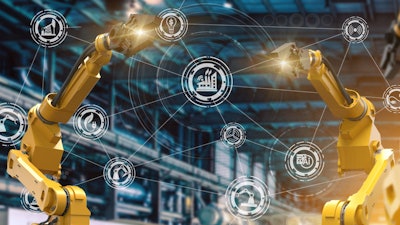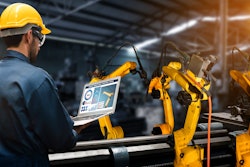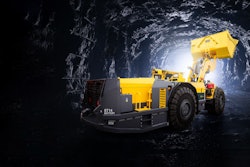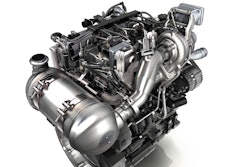
Both the immediate and long-term future of the manufacturing industry will be defined by the development of a number of ever-evolving and prominent trends. These trends are poised to have a significant impact in 2021 (and, in many cases, beyond), so it’s critically important for manufacturers to develop a keen understanding of what they are, how they will grow over time, and how they will impact the industry and the customers it serves.
With that in mind, let’s look at 5 manufacturing trends to watch in 2021.
COVID-19 AND EMPLOYEE SAFETY
It almost goes without saying that workplace safety and compliance with CDC guidelines and OSHA regulations (along with local safety measures) will remain front of mind for manufacturers as 2021 gets under way. With COVID-19 cases on the rise in many parts of the world, organizations will need to continue to be vigilant in their efforts to protect employees. Doing so, however, requires a significant investment of time effort and resources on the part of company leaders.
While an efficient rollout of an effective vaccine for COVID-19 would bode well for an eventual return to normalcy for the manufacturing industry, the impact of such a rollout won’t be felt for some time. In the interim, organizations will need to continue practicing social distancing in the workplace, restricting visitors to facilities, encouraging the practice of good hygiene, and ensuring employees are healthy and fit for work before allowing them on the job.
It’s been nearly a year since the COVID-19 pandemic took hold in the U.S., and it remains a major challenge for manufacturers across the country and around the world. While companies do have plans and protocols in place to combat the virus, adhering to them and ensuring the health and well-being of employees is – and will continue to be – no small task.
CONNECTED WORKFORCE
The desire to equip workers with technology capable of stay connected and collaborate from a distance has long been on a trend on the rise within the manufacturing industry. As older generations continue to leave the workforce and are replaced by younger employees, and the rise of the big data era in manufacturing takes shape, finding tools and technologies to make an increasingly spread-out and remote workforce as productive as possible is a top priority for companies today.
As a recent article from McKinsey explained, the ongoing COVID-19 pandemic has led to an increased reliance on digital collaboration to establish and maintain a connected manufacturing workforce. An increased emphasis on safety and changes to work processes, in an effort to maintain social distancing and minimize physical contact, has led organizations of all types and sizes to adopt cutting-edge ways to allow for workers to communicate and interact virtually.
While the widespread impact of the pandemic has caused this trend (and the adoption rate of related tools and technologies) to grow, it remains critical for manufacturers to provide training and resources to employees as they try to maximize productivity from afar. Why? Because doing so is poised to pay off over time. According to McKinsey, “by digitizing processes to improve equipment management and optimize physical assets, digital collaboration tools give manufacturers ways to boost productivity while enhancing quality.” And those who do it first – and well – will achieve a significant competitive advantage.
 Association of Equipment Manufacturers
Association of Equipment Manufacturers
INTERNET OF THINGS
The Internet of Things (IoT) has long been a trend to watch in manufacturing, and this year is no different. As it continues to grow in prominence and becomes more and more widespread over time, IoT technology will drive value for the industry by allowing organizations to make measured, informed decisions using real-time data in an effort to increase efficiency and positively impact their bottom lines.
According to a recent study conducted by the MPI Group, approximately 31% of manufacturing production processes now incorporate smart devices and embedded intelligence. Furthermore, more than one-third of manufacturers have established plans to implement IoT technology into their processes, while 32% plan to embed IoT technology into their products.
IoT technology offers both remote monitoring and predictive maintenance capabilities (see below for more on predictive maintenance), making it even more valuable for organizations looking to maintain visibility of equipment performance from afar. With the COVID-19 pandemic continuing to impact the industry in 2021, IoT technology will continue to be a go-to for manufacturers looking to maintain efficiency and productivity.
LOCALIZED PRODUCTION AND NEAR-SOURCING
The rise of customization and personalization has given way to large opportunities for manufacturers willing — and perhaps more importantly, able to succeed in a localized economy. By rethinking the way products get out to the public, organizations can craft an ecosystem of smaller, flexible factories located near existing and prospective customers.
Manufacturers are used to thinking on a global level. However, shifting their focus to a local level, they may be better able to meet the ever-changing needs, wants and preferences of the markets they serve. Consumers are making it abundantly clear that authenticity matters, and a localized approach to manufacturing is proving to be among the most effective ways to for organizations to respond accordingly.
The impact of COVID-19 also cannot be discounted. The pandemic has led manufacturers to reevaluate and reconsider sourcing, largely due to supply chain disruptions (especially in the earliest days of COVID-19). As a result, manufacturers have made a concerted effort to bring their operations closer to where their offerings are sold, and there has been an increasing desire on the part of many companies to source raw materials from domestic suppliers. All of this is being done in an effort to avoid pandemic-related disruptions and support the U.S. economy during these uncertain times.
PREDICTIVE MAINTENANCE
It’s no secret the ability for manufacturers to predict impending equipment failures and – more importantly – prevent equipment downtime is incredibly impactful to their bottom lines. Advancements in technology now allow organizations to do just that (and much, much more).
The benefits, according to a recent blog post from EAM-Mosca Corporation, showcase why predictive maintenance (PM) is so valuable to organizations today. PM helps companies:
- Reduced costs
- Fewer failures
- Minimize scheduled downtime
- Optimize parts delivery
Effectively conducting predictive maintenance is no easy task, however. Adopting a (successful) predictive maintenance model requires manufacturers to gain insights into the variables they are collecting and – more importantly – how often those variables present themselves on factory floors. Therefore, it’s imperative for manufacturers to possess accurate and relevant knowledge about their equipment. They must know what previous failures have taken place, and they need to make decisions around lead time. Because, as the closer to failure a machine is allowed to go, the more accurate the prediction will be.
This piece was written by Al Cervero, AEM Senior VP of Technology Content and Revenue Creation.


















